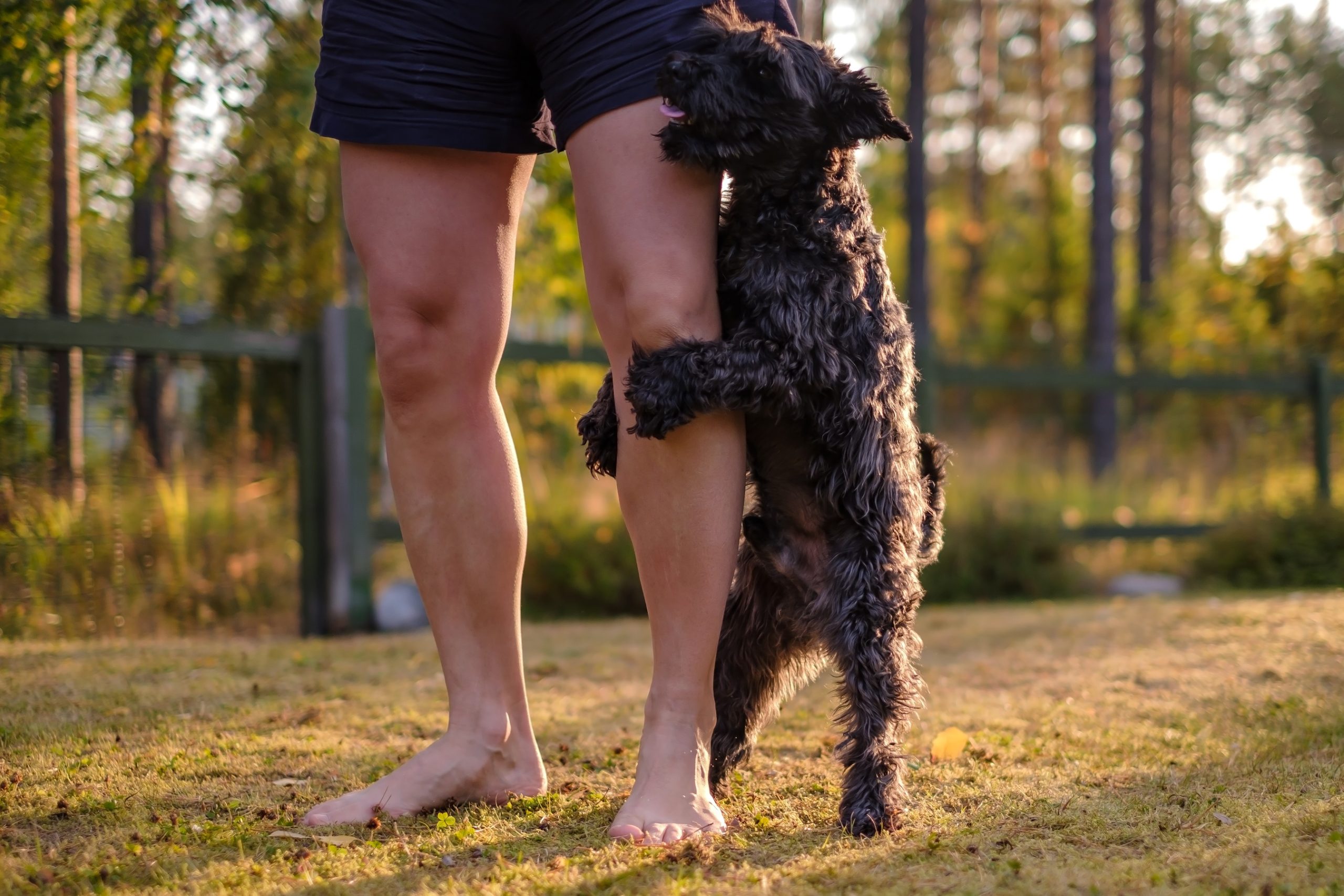Why Does Hump Leg? 4 Reasons & Tips to Stop It's
-

- by Admin
- Aug 16, 2024

Dogs are known to have a tendency to hump, but owners hardly ever tolerate this behavior without feeling a little embarrassed. Since everyone understands what humping means from a human standpoint, it's nearly hard to avoid blushing a little when your leg gets caught in the mix.
Thankfully, a lot of us are mistaken about the reasons we believe dogs hump. Dogs typically hump people and objects for emotional or utilitarian reasons rather than for sex. Even though it's a habit most of us would prefer to overlook, there's usually a deeper need at play, so you should think about the possible causes of your dog's behavior before rewarding it. If your dog's excessive energy is bothering you, we'll discuss the reasons why they could hump your leg and provide simple solutions.
Why Does My Dog Hump My Leg?
Dog hunching is a very normal habit that is rarely motivated by sex, particularly if the dog is aiming for your leg. Also, contrary to popular assumption, it's not always a behavior of dominance. The majority of the time, it's a reaction linked to attachment, fear, or social stress, which could account for why humping is more prevalent among smaller dogs.
1. Stress or Anxiety
When dogs are overstimulated to the point of experiencing tension and anxiety, hunching behaviors may manifest. This could be observed in a busy, unusual area or when guests arrive. Your dog may become overwhelmed by harsh handling or excitement from children, dogs, or other boisterous people, which can induce fear reactions like humping.
2. Attention-Seeking
Your dog may be humping to get your attention when there isn't any obvious stressor causing the activity. Humping is your pet's way of expressing happiness and excitement and wanting to play and spend time with you.
3. Overexcitement
Exuberant canines have a tendency to lose control of their playfulness. They'll let out all of their pent-up energy, even if it means humping your leg, when they don't know what to do with it. When you arrive home from work, you may see that your dog is ecstatic to see you.
4. Insecurity
When you return home, your dog may hump, which could also be an indication of underlying uneasiness. Dogs view their owner as the most important person in their existence, and any indication that this person isn't their primary source of protection and security might lead to undesirable behavior. This could be brought on by a shift in habit, a caregiver's general lack of attention, or a communication style that is inconsistent.
Ways to Prevent Your Dog From Hitting
Dog owners can handle their dogs' excessive humping concerns in a few different ways, each addressing a different underlying reason. For example, spaying and neutering can lessen the likelihood of male dogs humming, while desexing can lessen aggression and sex drive.
Making your dog feel comfortable and occupied will usually address their over-arousal when your leg is the object of their humping activity. Every time it occurs, attempt to identify any triggers in the environment.
After that, you can create a strategy to lessen your dog's exposure to the trigger and prevent him from humping. It is more likely to become extinct if you can get your dog to quit doing it.
1. Change Your Dog's Direction
One simple method to deal with humping just before it occurs is redirection. When your dog becomes overly excited when playing and begins to hump, throw a toy at them or play a rough game of tug-of-war with them. In these situations, you need to keep an eye out for clues that indicate your dog is ready to hump so you may intervene and stop them from engaging in the behavior.
2. Offer Additional Activities and Enrichment
You could think about providing your dog with additional enrichment and exercise options in order to lessen the possibility that they may ever wish to hump. Numerous stress-related behaviors are avoided by mental and physical stimulation. Your dog is less likely to start humping your leg if you can provide them with lots of toys, puzzles, and outdoor activities.
3. Put Your Bond to Use
Sometimes, humpback dogs require assurance from their owners in their bond. Establish a reliable routine and include play, training, and bonding into their daily activities. Your dog is less likely to act insecurely when they know what to expect from you and have faith in your relationship.
4. Provide a Safe Area for Your Dog
When it happens in front of visitors, leg-humping is embarrassing, and strange gatherings are the ideal setting for it to happen. In order to stop your dog from developing a habit out of it, you must stop them from practicing it. If you are unable to divert them, you might need to keep them apart until they are able to calm down.
5. Consult your veterinarian
Hunking could be a sign of a health problem for your dog, even if they won't always aim it specifically at your leg. Your dog may try to hump to relieve the itching and irritation caused by UTIs, incontinence, or allergic dermatitis.
Humming can occasionally develop into a compulsive behavior. If you are unable to determine the cause of the behavior, discuss with your veterinarian about having tests and assessments of their surroundings and way of life conducted.
0 Comments:
Leave a Reply